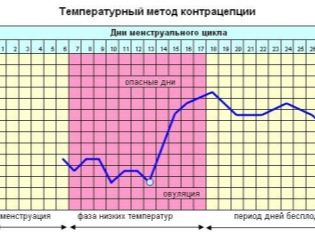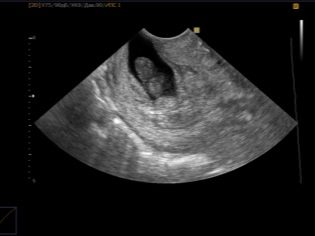How to count the weeks of pregnancy and why the calculation may be different?
People who are multipar with calculating the duration of pregnancy usually have no difficulty. But women who became pregnant for the first time, for the most part, are faced with a situation where their calculations do not coincide with medical ones, and this is often interpreted as an error by obstetricians. Let's learn how to count the weeks of pregnancy.
Ways to count
Counting weeks of pregnancy is very important for the expectant mother, and for doctors, primarily because it allows you to track the development of the baby and the progression of pregnancy, comparing them with general standards. Also, determining the exact date will help calculate the day on which childbirth is expected to occur. All examinations, analyzes, screenings, all tables of the norms of analyzes and ultrasound data in gynecology and obstetrics are compiled in obstetric weeks, which are usually significantly different from the actual.
In order to avoid any discrepancies and confusion, a woman is recommended to get used to counting the term from the very beginning in the same way as physicians do.
It is difficult to say whether the term is accurate. Most likely not, because the obstetric method is averaged, but it is the most optimal method. There are no exact methods because it’s impossible to figure out the time of conception even to the day. A woman is fertile only 24-36 hours throughout the entire cycle. This is the period of her ovulation. That is how much survives mature egg. Spermatozoa may already be in the genital tract by the time the oocyte leaves the follicle, or may reach the egg later, but again no later than a day after its release. If conditions are met, conception comes.
Ovulation in the vast majority of women occurs in the middle of the cycle, about 14 days with a 28-day cycle. But it may well shift and happen later, stress, medication, fatigue, the common cold and a host of other factors can affect it, and it is impossible in principle to fully take into account.
Thus, a woman who claims to know exactly when the baby was conceived may be mistaken. If a lady leads a normal rich sex life, then in principle she cannot know the exact moment of conception.. Gynecologists, despite all the development of modern medicine, also can not set the day and hour of conception, and therefore use a more simplified uniform for all the calculation of obstetric weeks.
Default The first day of the first week of pregnancy is considered the first day of the cycle in which a significant event took place - the conception of a baby.. That is, the ladies go monthly, and already the first week of pregnancy. That is why any visit to the doctor while carrying a baby begins with a simple question about the date of the last menstruation - this is how time is compared.
Also Pregnancy can be calculated by ultrasound, but this is a less accurate wayBecause the size of the fetus may for various reasons be more or less the norm in the same period in different women.
Let's take a look at the basic methods.
Obstetric calendar
It is this method that is considered the most correct, despite the fact that it causes sincere bewilderment to inexperienced pregnant women - is it possible to be pregnant when there was no sexual intercourse yet? Can. The first two weeks of obstetric period is the first part of the menstrual cycle, preceding ovulation, the second two weeks - the pregnancy is already actual, but not yet obvious. Only at the end of 4 weeks of pregnancy is there a delay when you can do tests, undergo blood tests for hCG. If they are positive, the doctor makes an appropriate decision based on the date of the last menstruation - 4 weeks of pregnancy. In fact, since the beginning of the baby’s existence, about 2 weeks have passed by this time. Development weeks are called embryonic, and in them the duration of pregnancy is not considered.
Obstetric weeks in pregnancy 40 and more. Date of delivery falls at the end of 40 weeks. But childbirth can occur at any time from the full 37th week to 42nd week, and this will be considered the absolute norm.
Obstetric weeks began to consider pregnancy long before the ultrasound was invented by humanity, and certainly there were no online counters and calculators.
There are several ways to calculate the date of delivery (exclusively estimated, approximate) using obstetric methods:
- (first day of menstruation minus three months) + 7 days;
- (first day of menstruation + 9 months) + 7 days;
- first day of menstruation plus 280 days.
Which of them to use, the doctor decides for himself. And he will do it when registering in the antenatal clinic, when the expectant mother turns there.
One obstetric month is equal to four obstetric weeks, in pregnancy exactly 10 obstetric months, divided into three trimesters. The term from the moment of conception is approximately two weeks less than obstetric and now we know why this is so.
If a doctor examines a woman, twirling a calendar in her hands and thinks, she says that she already has 8 weeks of pregnancy is not a mistake, but literally the following: 8 obstetric weeks = 6 weeks from the moment of conception = exactly 4 weeks from the moment the delay started.
Ultrasound method
Ultrasound machines are programmed for obstetric weeks, and therefore if an ultrasound scan shows that the gestation period is 7 weeks, this means that the pregnancy is exactly 7 weeks, and not 9, as some people think, given that two obstetric weeks should be added to the actual period. 7 weeks for ultrasound = 5 weeks of the period of embryonic development and nothing else.
Modern ultrasound scanners produce results in weeks and days, that is, 7 weeks and 5 days or 7 weeks and 3 days, which allows us to specify the gestation period already calculated by obstetricians.
Ultrasound method for determining the exact date is relevant for women who do not remember the date of the beginning of the last menstruation, who do not know it due to the irregularity of the cycle, the shot down cycle, and also after the successful IVF protocol.
It is only important to know that the most accurate timeline for ultrasound examination is possible only in the early stages. This is due to the fact that all embryos in the period of embryogenesis (up to 9-10 weeks for obstetric period) grow at approximately the same rate.
Then genetic factors come into effect, an individual developmental program: one baby whose parents are not tall is destined to be small and small in height, and the other will have impressive growth and weight indicators from mid-pregnancy.
The deadline at which you can focus on ultrasound data in terms of determining the dates is 11-13 weeksIt is at this time that the first prenatal screening is conducted, the goal of which is not only to detect the probability of chromosomal abnormalities of the fetus, but also to correct the deadlines including.
Gestational age
Here is another obstetric term that raises many questions not only for inexperienced future moms who are expecting the birth of first-born children, but also for women who have given birth earlier - how much does gestation begin with, what is it, why is it considered at all?
This term hides the embryonic term already familiar to us, that is, the term from the moment of the merger of the germ cells of mother and father and the beginning of a new independent child life. The exact term of gestation is known only to those who conceived under the supervision of doctors. - who was inseminated on the day of ovulation, confirmed by an ultrasound protocol, who was treated with IVF (in this case, doctors not only know to the hour, but also to the hour know when and how the egg and sperm cell merged, because it happened in vitro) .
This does not mean that pregnant women after IVF should consider the term in its gestational equivalent. Gestational age, like the others, will be counted in the obstetric weeks from the first day of the last menstruation, if the woman knows her, or according to an ultrasound, but again strictly in the obstetric weeks.
Calendars and counters online
A modern woman does not need long and painful calculations with a pencil and calendar, adding or taking months to calculate the DA - the expected date of birth. Today there is a mass of various calendars and counters. It is enough to enter the date of the last menstruation and the duration of your menstrual cycle in them.and now the result is the current term, the expected day of birth, the ordinal number of the month, the trimester, and even the probability of the birth of a boy or girl (everything except this item is true, the last item is for entertainment, it comes true with a probability of 50 / 50).
Some meters are equipped with deployed functions: they not only consider everything, but also provide detailed information on how a baby develops by week, what its height and weight, and development standards. Counters are free.
The da - sure or not?
And finally, the accuracy of the DA should be clarified. Specify a specific day, for example, March 15. This does not mean that a woman will give birth on this day. Little of, strictly in the DA not more than 5% of pregnant women give birth - such is medical statistics. The DA itself does not exist for the future dad to postpone all things in advance on this day, and not for the expectant mother to check with the predictions of numerologists and the calendar for choosing the name born on this day. The DA is an approximate landmark. The birth itself will occur when both the maternal and child organisms are fully prepared for this responsible process..
Up to 20% of babies are born at 37-38 weeks, about 30% at 38-39 weeks, 40% after 39 weeks, the remaining 10% of babies appear either before 37 weeks or after 40 weeks. Up to 42 weeks inclusive, childbirth is considered urgent, the pregnancy has a prolonged status, but not postponed, as many people think. So feel free to add 2 weeks to the DA, or subtract 2 weeks from it. During the month, the child can be born at any time.
If you have a large fetus or usually your menstrual cycle lasts more than 32 days, then there is every chance that your pregnancy will not be limited to 40 weeks. If the pregnancy is multiple, or you have a normal menstrual cycle of less than 28 days, it is likely that the delivery will take place before 40 weeks.
From the following video you will learn how to calculate the expected date of delivery.





















